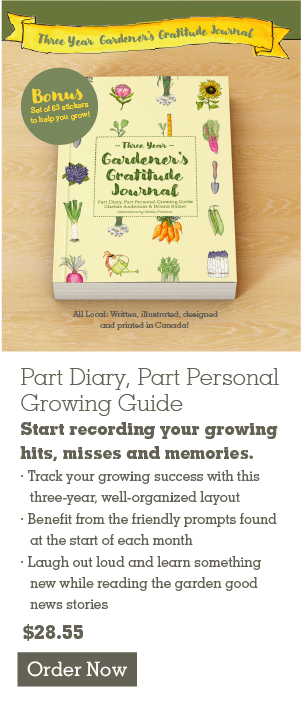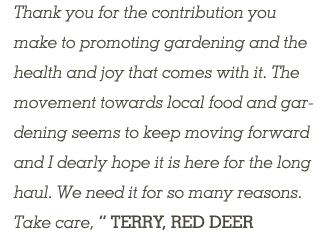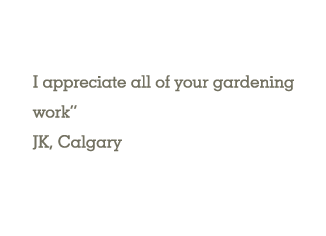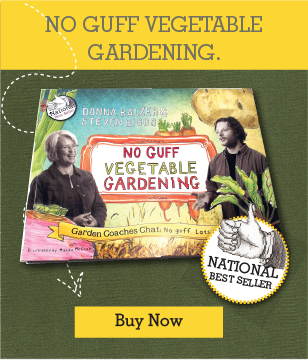I never paid much attention to raspberries or puppies before I bought my new “old” inner city house in Calgary 27 years ago. But almost as soon as we moved in, my 14 year old son asked an important question: could we get a puppy?
I had a number of problems around getting a puppy and one of them was this: where are we going to put this puppy? And do we need a dog run?
Then, as a gardener, I thought about how I would probably never use the narrow shady spot on the north side of my house for growing anything anyways. The area was only 4 feet wide (1.25 M) and it really was just a shady cool waste space running the full depth of my house. In a happy turn of events, we found a free puppy, added a gate across the opening between neighbour’s fence and our house and it was happily ever after. And as for raspberries? They magically crept in from next door and gradually grew into Kepla’s run. So in one quick minute we got a puppy, a home for our puppy and a summer full of berries.
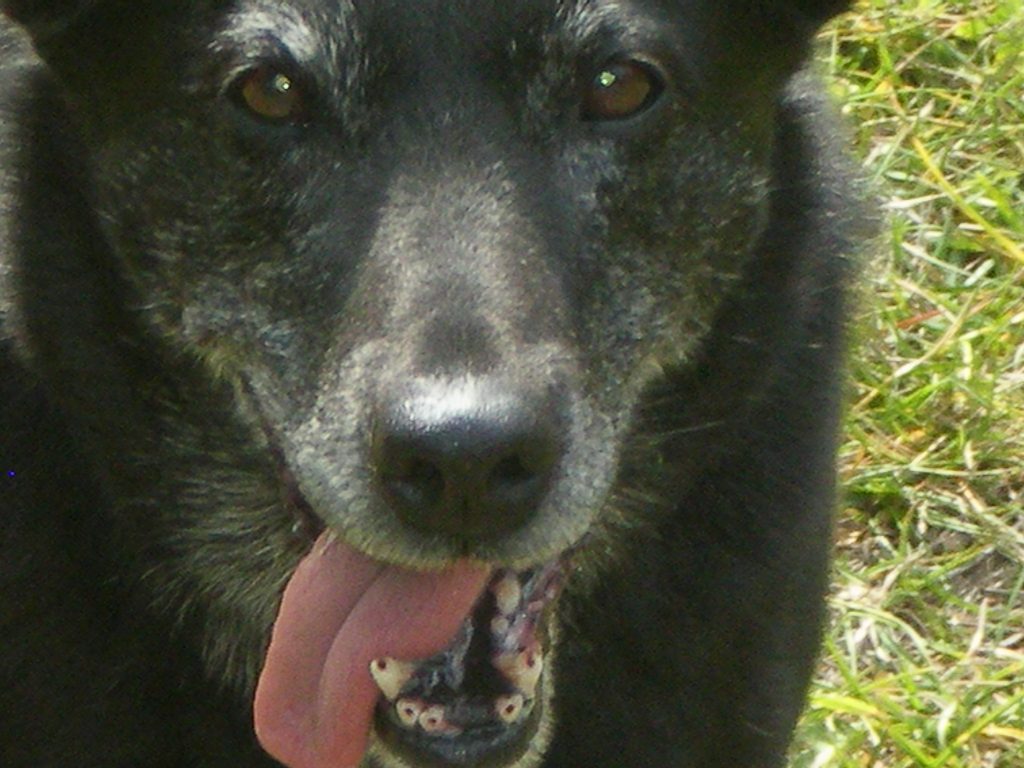
Kepla was a “mixed breed” or “farm dog” – terms formerly applied to dogs of unknown breeding from sources all over the world. Her teeth were well worn by the time she left us at 17 because of hours spent catching sticks before we learned a frisbee was easier on her teeth. Kepla shared her first “dog run” with the raspberries gradually creeping in from a neighbour’s yard.
Shortly after Kepla moved into her relaxing, cool, shady space, the raspberries started popping up in the run. Eventually my neighbour’s raspberries, growing on the other side of the fence, filled the space formerly known as the dog run. And pretty soon it was dog run slash raspberry patch. In the end, my son moved on to school and our mixed breed “farm” dog followed me on my nomadic life as a gardener. I moved around the city and eventually between provinces. Kepla only lived for 17 years but as far as I know the raspberries are still alive and thriving in her former run.
Apparently, raspberries will grow anywhere.
I think that makes raspberries perfect for home gardeners because as a home gardener, you can take a very, well, let’s say professional approach and you can be very systematic about how you’re growing them. Or you can just get raspberries for free as they creep under a neighbour’s fence!

The blooms on raspberries are “perfect”, meaning they have both male and female parts, and you only need a single variety or plant to get fruit. They are pollinated by bees of all kinds. Thankfully they bloom early but not too early so there are usually pollinators around to make sure the job is done and the fruit forms successfully. Donna Balzer photo
WHEN DO THEY BLOOM?
During an interview I did with Steven Biggs on The Farm Garden Life podcast , Steven said: “One other thing I thought we should share in the beginning, because we’re talking about (Raspberries) being pretty easy to grow, (is that) they also bloom later, usually after that last frost in the spring. Some fruits are a little bit more problematic. You know, if you’re growing cherries, you’re always worried, Is there going to be a frost that knocks out the bloom? So if you are worried about not getting any fruit , just relax, because raspberries bloom later.”
So a late bloom (approximately mid-June for Floricanes) means there is no worry, even in Calgary, about blooms getting hit by frost. Or about pollinators being too cold to do their job when raspberries bloom. And while we do have a problem with apricot blooms in my northern climate (Calgary, Alberta) because once every fourth year, you’ll get a beautiful bloom on apricots that coincides with a nice late spring, but in other years, those early blooms freeze or it is too cold for the pollinators. This “failure to produce” happens because Apricots tend to bloom very early compared to raspberries, and the flowers are frosted at just the wrong time.
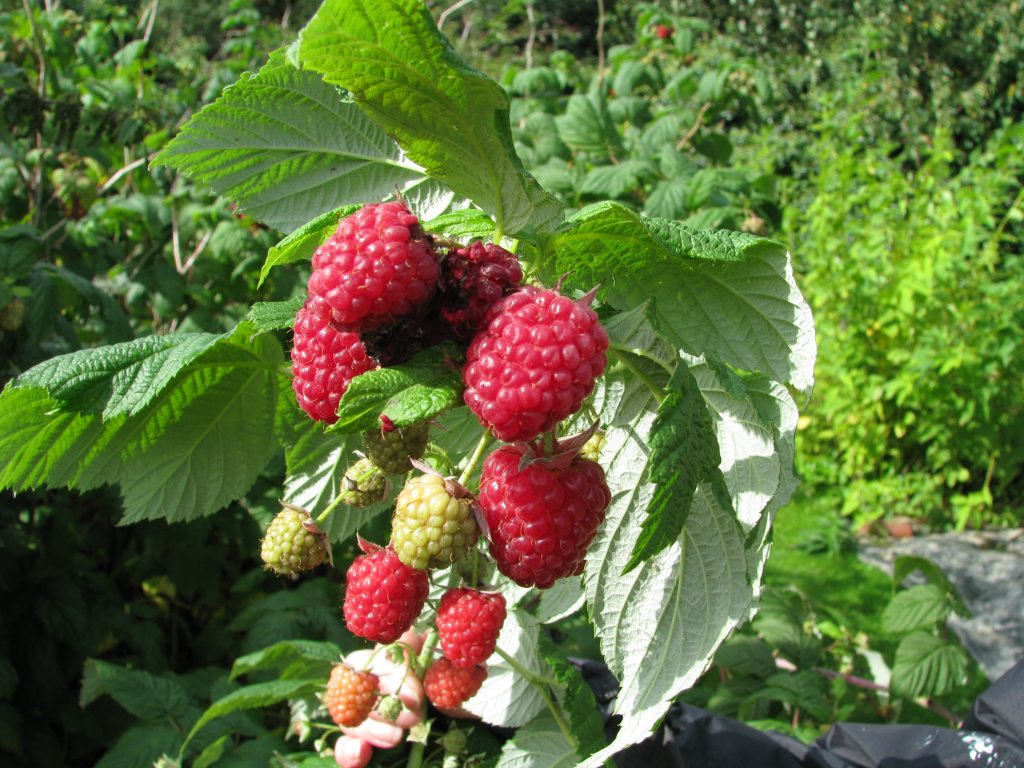
Raspberries are visually beautiful and very tasty. Thanks to different kinds on the market they can fruit any time from July to October in cold climates. Photo by Donna Balzer
WHEN DO THEY FRUIT
Raspberries fruit a month to 40 days after they bloom. Floricane types like the variety Boyne bloom only once a year on second year wood, producing blooms from early to mid June and fruit only in July. Some newer types of raspberries bloom on both second year wood (like Boyne) and on first year branches in later summer or as long as weather permits in the fall. These are often called Primocanes or fall blooming rasberries and they will fruit from later August into late October.
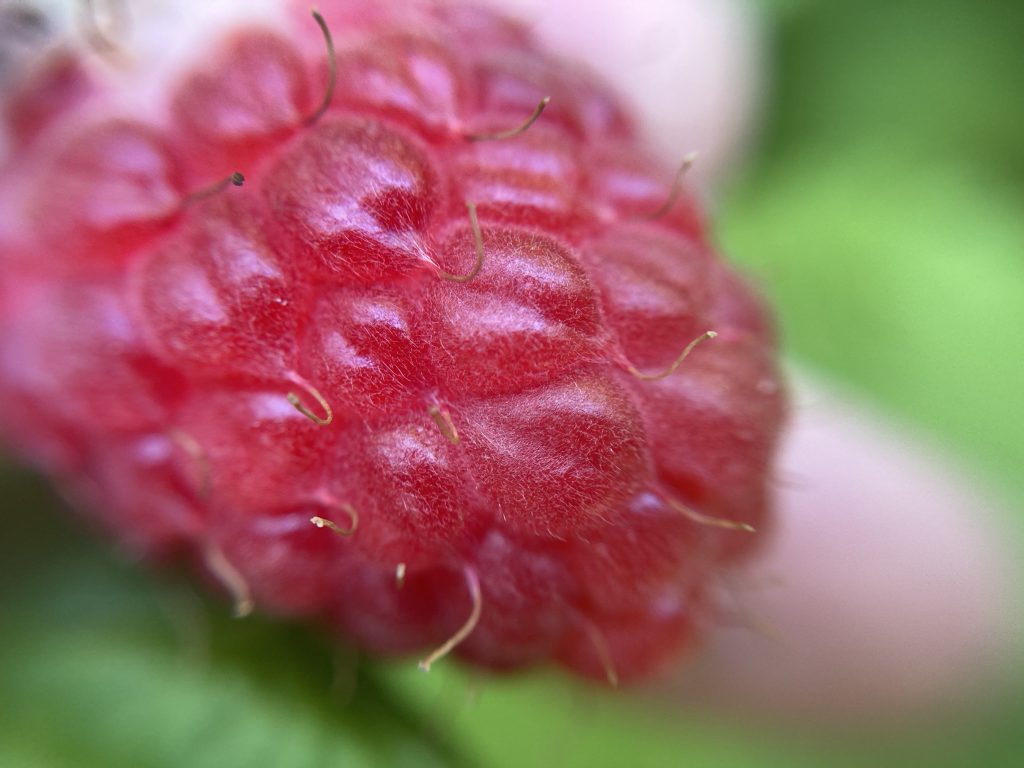
This delectable raspberry is probably the variety Joan J., a Primocane or fall blooming type of raspberry that is so perfumed and delicious it is much sought after. It is definitely my favourite raspberry. Photo by Donna Balzer.
Some of the raspberries that bloom on primocane, or first year stems, produce berries a lot later in the season because they will not start blooming until the stems have grown up and out of the ground, from late July through heavy frost. These types of raspberries are often called Fall bearing raspberries because they really do produce closer to fall. If you want to be guaranteed to eat raspberries in both July and through fall, you probably want to grow at least two types of raspberries to keep the blooms and fruits coming. Or you want to leave second year wood as well as new stems to grow together so that fall raspberries or primocane raspberries produce fruit from about the same time as floricane berries into late fall.
WHEN DO YOU PRUNE RASPBERRIES?

Raspberries may be pruned in fall to remove the older branches that have clearly bloomed and left small fruit stems on the twigs. But if you live in a colder climate it is better to prune in late winter when the plants are still dormant but whatever winter-kill you might have received is obvious. By pruning late, you can see what is dead or alive! If you are growing the later blooming or fall-blooming primocane types, you may also choose to cut the plants back all at once in the fall, forgoing the early flowering and fruit production because they can and will flower on new branches sprouting in spring. The only problem with the mowing style of pruning is that blooms will be later than if some second year stems are also left in the garden. This is because fall blooming raspberries can produce an early flush of berries on on 2cnd year wood about the same time as Floricanes like Boyne start producing. This means fall blooming (sometimes called Primocanes) bloom and produce in early summer and then again in the late summer and fall.
Pruning might appear to be a fall only activity on raspberries. In our podcast, I say: ” (if) you don’t know what kind of raspberry you have, it could be tricky (knowing when to prune.) But if you’re buying new raspberries and you’re buying ones that you know are blooming on second year wood (Floricanes), then those bigger darker canes that have already survived a whole winter and bloomed and fruited this summer will be really obvious. Simply remove these bigger canes all at once to the ground and thin out the remaining one-year old stems to allow for fruiting next year.
In both primocane and floricane varieties, thin out the stems remaining after the spent second-year canes are thinned or removed, but easy does it. If you are growing the fall blooming raspberries, the ones that bloom on brand new branches as well as 2cnd year branches, you can just get a mower in and mow them right down to the ground. All at once. If you do it when they’re dormant, they’ll come back up all at once in spring but you will miss out on the early fruit possible from second year stems. So that is the tricky part.
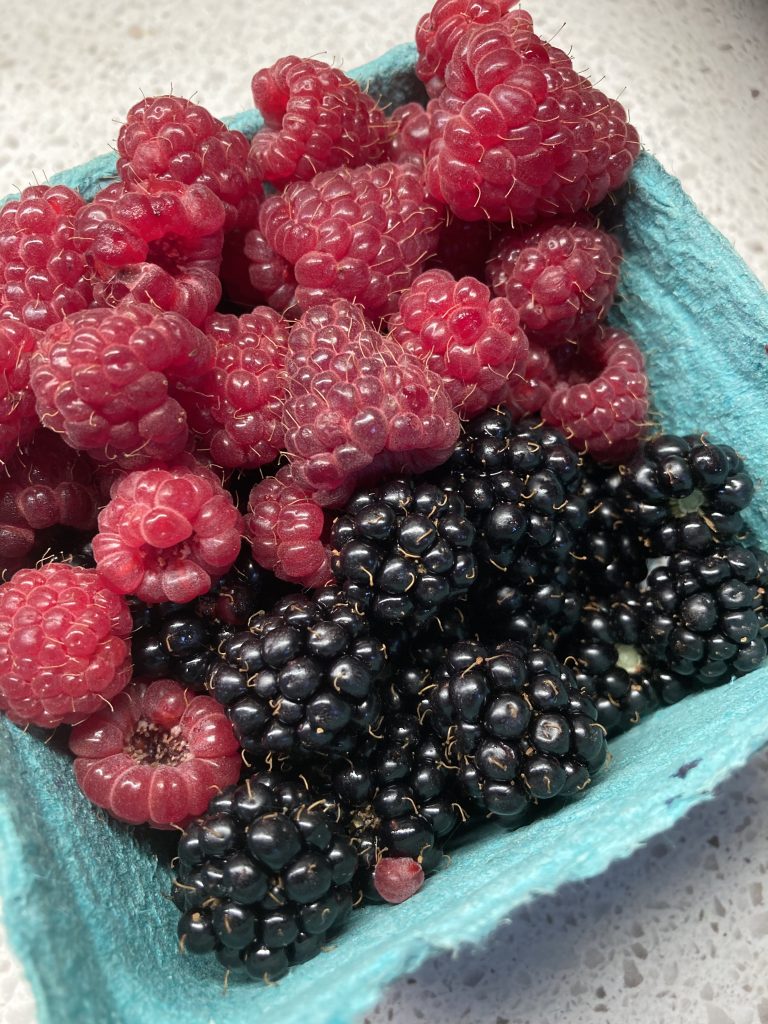
Juicy Joan J raspberries shown beside blackberries harvested in August on Vancouver Island. Joan J are harvested just after the floricane varieties like Boyne but they also produce fruit on new stems so are harvested well into fall. Blackberries, like those shown, are produced on Floricane or second year wood. This gives you a clue so you know to remove the already finished blooming floricane stems in late fall or late winter depending on the region you live in.
To recap: Remove all two-year old stems that have already bloomed and show obvious old blossom side shoots, taking them out right to the ground. Then thin out the remaining one-year old stems.
Or, on fall blooming types (often called primocanes), if you are lazy and just want later blooms and fruits, you can mow all canes right to the ground every fall.
INFORMATION ABOUT RASPBERRY VARIETIES
Once I had room grow loads of raspberries on my half-acre lot in Qualicum Beach on Vancouver Island, I was super curious to try all the different kinds. And that’s when I bought a variety I heard about because it had won the Award of Merit from the Royal Horticultural Society in England. If there is an award winning movie, I tend to go to or watch that movie. If there is an award winning raspberry, I definitely seek it out!
So I looked for Joan J Raspberry because I had heard it was amazing! I found it locally in Qualicum Beach and I planted it and anonymously had friends taste it. We compared this new variety to my “old school” floricane-style Boyne raspberries (a common type of raspberry often found on the prairies because it is hardy, pest free and blooms on second year wood.) And believe me, the fruits of old school and new school raspberries all look more or less the same. They look red (unless you plant one of the golden varieties) and they are about the same size (unless you grow the type sold as ‘Mammoth’) Everybody involved in the taste test loved the perfume and the scent of Joan J best. It is truly an award winner and fan favourite because it’s such a tasty raspberry.
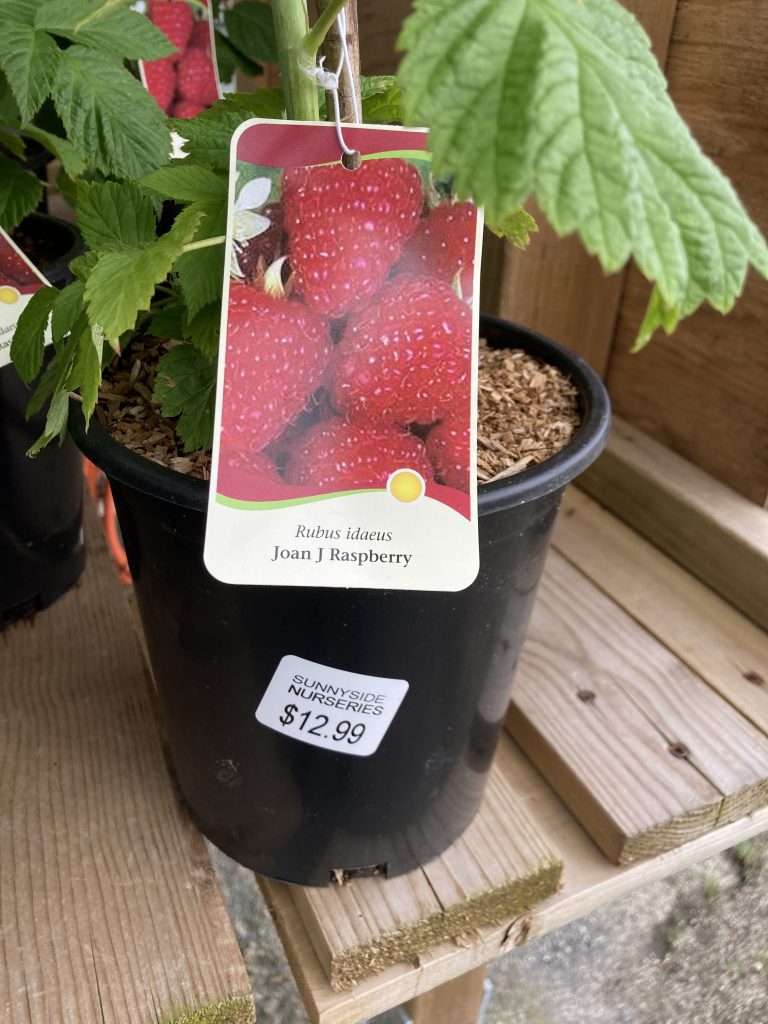
Award winning Joan J Raspberries bloom on both Primocane (new) wood and Floricane (2-yr old ) wood. Donna Balzer photo
So once I tasted Joan J, I was like, “I’ve got to have a lot more of these.” Whereas the year before I had tried the Autumn Bliss (another raspberry that blooms on primocane branches as well as second year wood) and I had seen this variety (Autumn Bliss) at a garden centre for almost $20 per single plant. And the Autumn Bliss are great in the sense that they’ll produce from mid-summer summer into autumn, but the flavour is nothing special. For the same harvest, I definitely prefer Joan J.
So if you’re looking for flavour and long for a late-blooming variety, I suggest Joan J and I have moved some of the plants to Calgary so I hope they thrive here. But as I said earlier, Calgary is a colder climate. And so I also ordered the Saskatchewan introduction, Mammoth, which produces larger berries than most other varieties.
What I just want to say is that one variety can taste quite different from another and tastes vary among gardeners. And honestly, if you’ve got Boyne raspberries, and you’ve always eaten Boyne raspberries, you’ll love Boyne raspberries. It’s only when you compare them to something growing right beside them that you realize that there’s quite a range in flavours among raspberries varieties so do your own little comparison this summer.
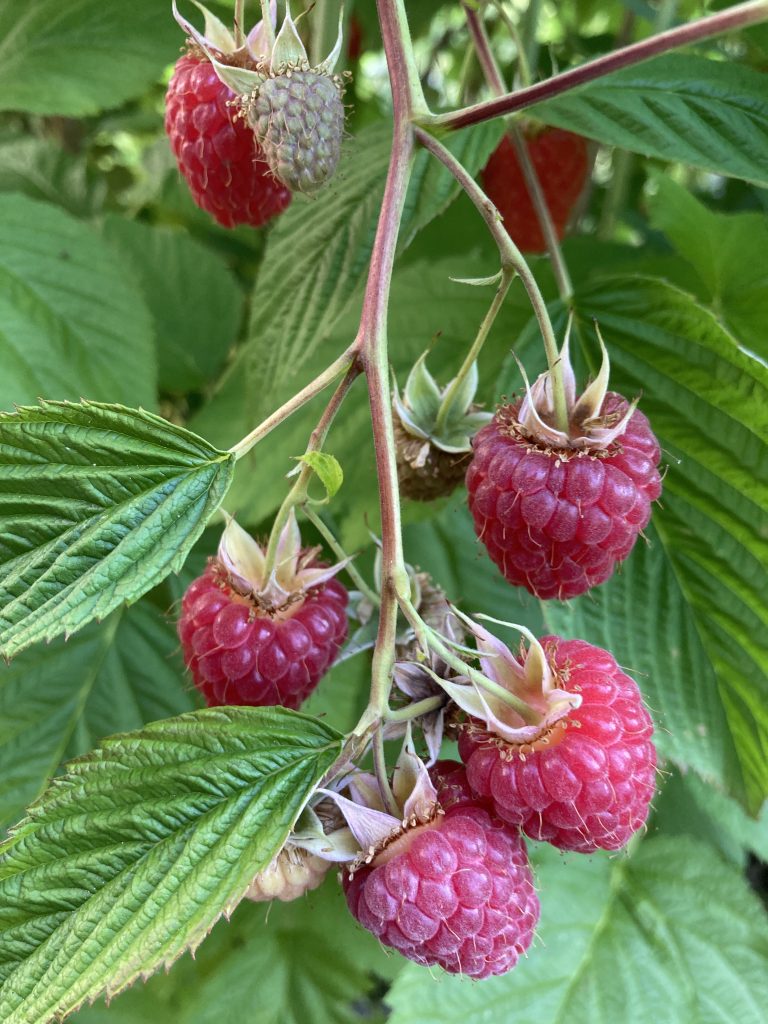
If you see both mature berries and newly forming berries on your plants, you probably have a variety that continues to bloom as the stem grows. The general term for these raspberries is Primocane, and you can expect them to bloom until well into fall but when winter hits the berries will stop ripening. Donna Balzer photo
NOTE: Primocane (also called Fall raspberries) produce fruits on both the first year and second year stalks. Floricane raspberries produce fruit in the second year only and then the stalks are removed. For this reason floricane varieties like Boyne are pruned to remove old, already finished blooming canes first and then the one-year old canes are thinned out. Meanwhile primocane varieties can and will bloom earlier on second year canes and again later, on new canes. So some gardeners will leave the one-year old canes in place to let them both bloom in colder climates first, while the new emerging canes bloom second.
LISTEN TO THE WHOLE PODCAST INTERVIEW ABOUT GROWING RASPBERRIES IN NORTHERN CLIMATES
This article has been edited for space and clarity. If you want to listen to my entire podcast about raspberries with Steven Biggs, use the link to podcasts on my website and scroll down to “Hands Off Crop: Growing Raspberries (they do fine without your help)”.
We add a new food-focussed podcast weekly so subscribe and listen to all our fresh titles, designed for Northern Gardeners.
LEARN MORE ABOUT GARDENING NOW
As gardeners and Horticulturists, Steven Biggs and I also run various live camps and pre-taped masterclasses for gardeners. Join in an interactive session now! Check out classes HERE.



